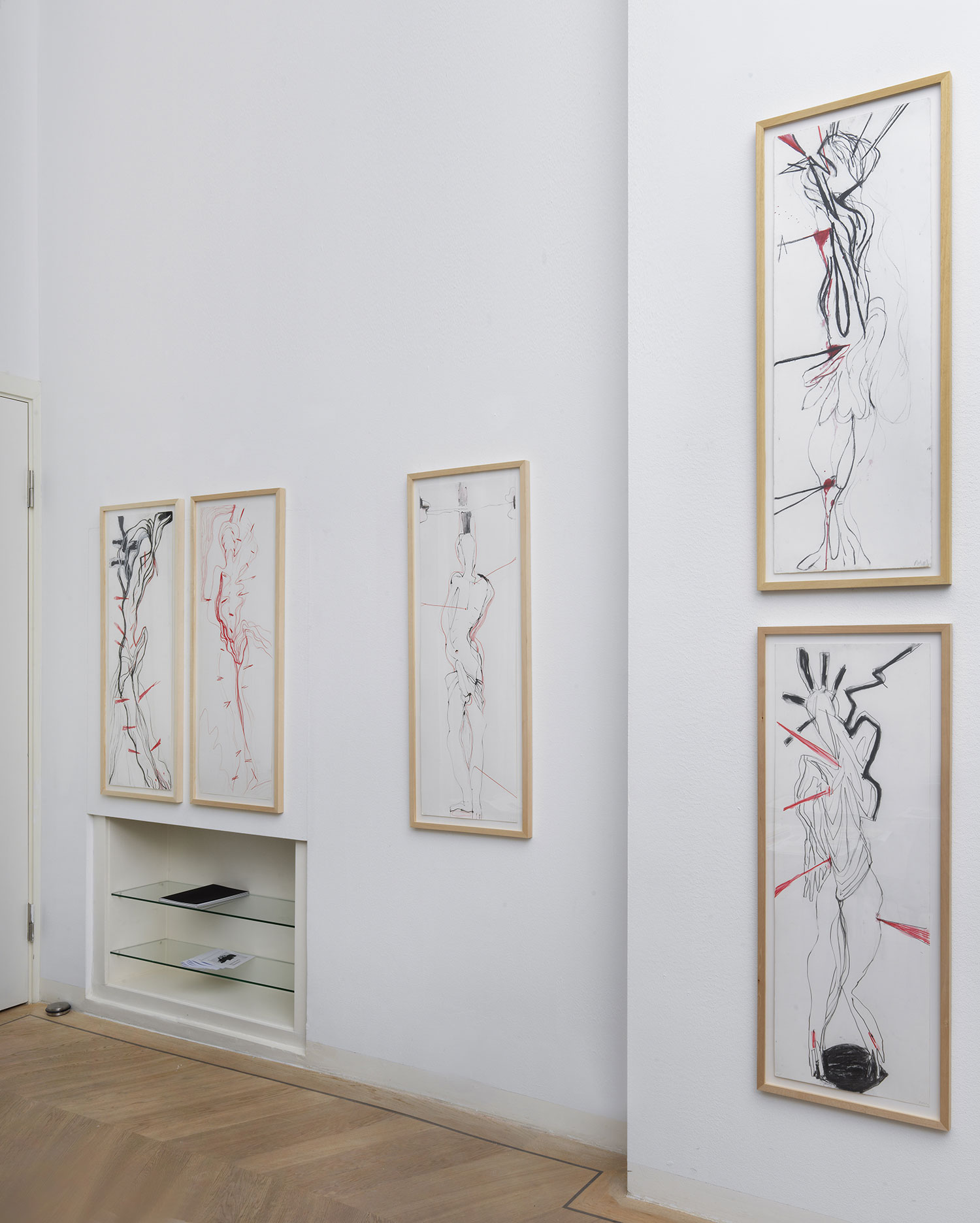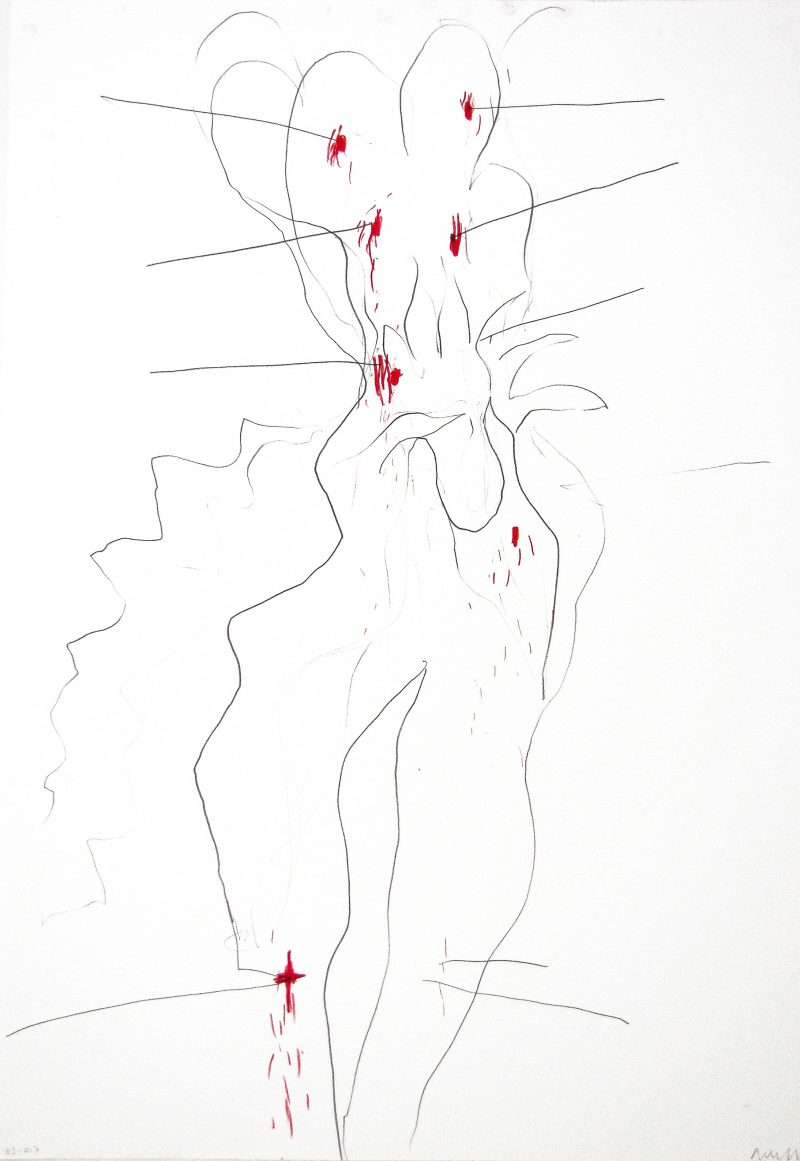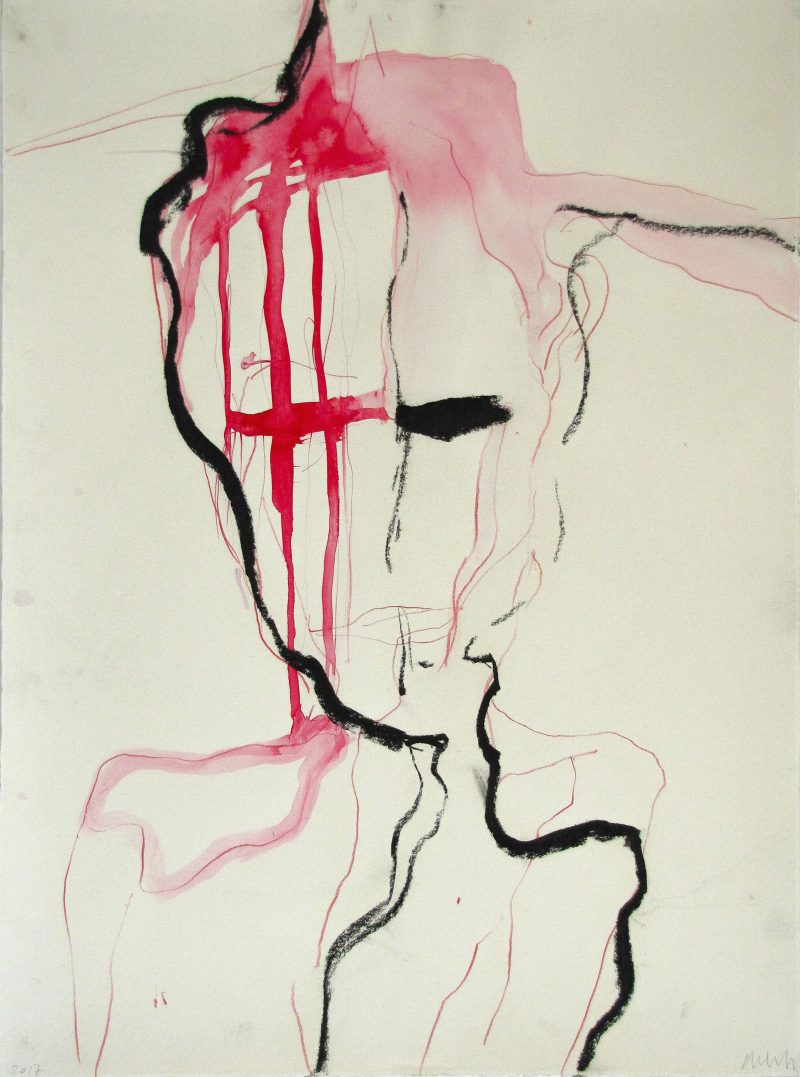ANDRÉ DE JONG
Revelations, Parts I & II
1 Feb – 21 Apr 2019
ANDRÉ DE JONG returns to TMH with new works placed alongside his performative photography in its first public display. The show is made up of two parts, centered on the series St. Sebastian, 2017, and brings to the forefront the artist’s complex themes and methods of working.
Writing for the influential Dutch literary magazine De Gids, the media theorist Arjen Mulder called André de Jong the most important contemporary draftsman and pitted the “bodily power” of his “organic lines” against that of Piet Mondrian and Paul Klee. De Jong has been pushing the limits of drawing in his magisterial oeuvre for over five decades. But he is also a performer, a photographer, a sculptor and a conceptual landscapist. In his studio in Friesland and its grounds of his making, his life and art are naturally entwined: “I enact a performance, or place photographs on the table, or I go outside and collect some butterburs… The act of drawing itself is also part of the process.”
SCREENING & TALK
Coda, with Huub Mous and Arjen Mulder, 14 Apr 2019
TALKS
On Drawing with media theorist Arjen Mulder, 24 Mar 2019 / Coincidences with art historian Huub Mous, 1 Mar 2019
Download Press Release
The exhibition lays bare his lifetime investigation of art’s fundamental notion of revelation, which is bound together with his revelatory methods of working. De Jong begins all his work with smaller drawings and photographs of staged performative actions. For TMH, he has reconfigured and reframed for public exposure a number of earlier private images in order to present them along with his radical new St. Sebastian sequence. De Jong’s pencil thin, faintly subsisting and charcoaled, domineering figures of the all-too-familiar—but stark bare—martyr saint are of-the-moment ambiguous and painfully disturbing. Yet their reincarnation in the broken linear contours and overlapping planes of other works also evoke the timeless thrills of the body in action sensually tied to nature. Brimming with possibilities for disclosure—epiphanies even—the works leave the viewer and the artist relationally conjoined in the continuous unfolding of meaning.
BIOGRAPHY
André de Jong (1945, NL) is an exceptional draftsman, but also a prolific photographer, a performance artist, a practitioner of land art, and a master of sculptural form. In 1979, de Jong set up his studio in Friesland, in the north of the Netherlands. His long periods of working in relative isolation have been punctuated by exploratory trips to Iceland and Norway, reflecting his early artistic choice—more visionary today than ever—to confront our uneasy presence in nature. Rooted in poetically captured trajectories of the body, of our ambivalent, gender-stretching sense of self, André de Jong’s art is uniquely intersubjective and socially formative. His vision has the power to move and transform us.




















































